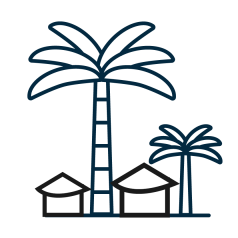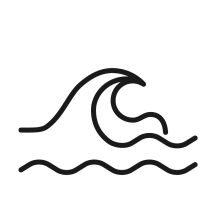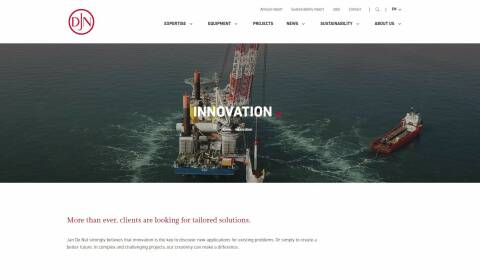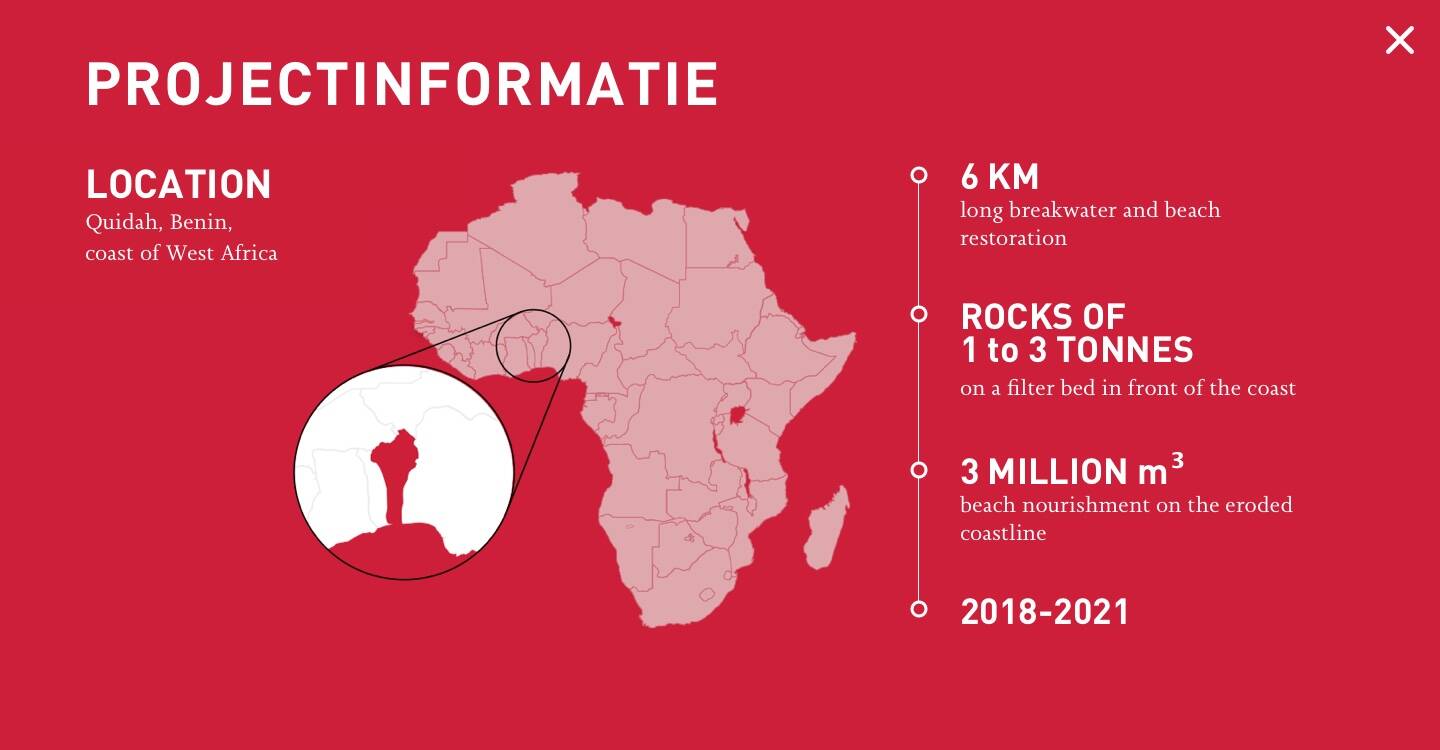



Together with our partners we will analyse and interpret the results during the coming months. So stayed tuned for more updates on our website soon. Our objective is to compile all information to gain a comprehensive understanding of the long-term ecosystem development and socio-environmental impact resulting from the underwater breakwater in Benin. However, what we can already affirm after our visit to Benin is that not only was it a warm experience, but, most importantly, the robust resilience of this innovative solution is nothing short of remarkable.
Since Benin is a scientifically understudied region, some of the species here do not have a DNA barcode assigned to them. These species cannot be detected using the eDNA technique. To address this issue, we are collecting DNA samples from all identified fish species in artisanal fishing nets, enabling the creation of DNA barcodes for each species. This approach generates valuable data for an understudied region and enhances the capability to detect these species in our eDNA samples.
Finally, we also apply a new and interesting technique: environmental DNA (eDNA). This method involves extracting and analysing genetic material from environmental samples like seawater to detect and identify species present in a given environment.
For this, we apply three different techniques:
To analyse the marine life growing on the boulders and present in the surrounding sand, we took sediment samples and sieved out the small critters within. At the same time, a professional diving team collected corals, sponges, algae, and other marine life attached to the boulders. To identify all these critters, we are collaborating with the University of Abomey-Calavi in Benin and the Institute of Agriculture and Fisheries (ILVO) in Belgium.
To map fish biodiversity, we monitor and identify the species found in nets deployed by the fishermen along the breakwater and compare them with an area without breakwater. We do this to see if the breakwater attracts a greater diversity of species compared to areas without such structures. The taxonomic expertise of our local partners played a crucial role in this study. The first results are promising! The breakwater contains much more diverse marine life than the comparison areas.
We organised an interview with the fishing community to gather their perspectives and experiences regarding the breakwater and their fish catch.
By constructing the underwater breakwater, we introduced boulders where previously the subsoil consisted of sand. These boulders provide a very stable base for marine organism attachment. It creates a reef-like habitat where sponges and corals thrive, but it also serves as a nursery and important breeding ground for fish. We now want to find out how much the biodiversity has effectively increased around the breakwater. In this twofold study, we are researching:
Socio-environmental dynamics








Benin


Jonas Van Acker
Engineer Marine Environmental Department

Ruben Geldhof
Engineer Marine Environmental Department


Coastal protection
Marine environment
We always aim to build greater and better, but we also care about the bigger results of a project. Three years after finishing the project, we continue to research the long-term impact of the five-kilometre-long submerged breakwater on the marine environment, the coastal protection and the socio-environmental dynamics. We do this by continuing our collaboration with stakeholders such as artisanal fishermen and local knowledge institutes.
Our colleagues Jonas and Ruben recently returned to Benin to conduct marine and socio-environmental research.
The 5-kilometre-long submerged breakwater is a great example of a Nature Inspired Design. By imitating the shape of a barrier reef, we provide coastal protection but also create the basis for a rich and thriving ecosystem. By giving Nature Inspired Design a key place from the start of the project, we were able to encourage biodiversity and improve the natural environment around the project.


Discover an overview of our other Nature Based Solutions: AquaForest, United, Dunefront
mil. m3
tonnes
km
years


Around the world, coastal ecosystems are under pressure. The culprits? Climate change, human activities and extreme weather events. Tropical countries, such as West African ones, are especially vulnerable. In Benin, for instance, the Atlantic Ocean swallows up more and more land. This not only threatens houses, ports, but also causes floods, and soil erosion. Insert a nature-based underwater breakwater we finalised in 2021. This to reduce erosion but also to ensure a safer area for swimming and maybe a hotspot for life underwater. Today, three years later, we return and examine the results of this construction.



Avlékété
Early 2018, we started extensive coastal protection works off the coastal town of Avlékété. The government of Benin commissioned this project.
We built a submerged breakwater parallel to the coast in combination with sand replenishment. The underwater breakwater ensures that waves continue to reach the coast but with less energy. In this we have been inspired by nature: coral reefs. These are also situated in the shallows and just off the coast.





Together with our partners we will analyse and interpret the results during the coming months. So stayed tuned for more updates on our website soon. Our objective is to compile all information to gain a comprehensive understanding of the long-term ecosystem development and socio-environmental impact resulting from the underwater breakwater in Benin. However, what we can already affirm after our visit to Benin is that not only was it a warm experience, but, most importantly, the robust resilience of this innovative solution is nothing short of remarkable.
Since Benin is a scientifically understudied region, some of the species here do not have a DNA barcode assigned to them. These species cannot be detected using the eDNA technique. To address this issue, we are collecting DNA samples from all identified fish species in artisanal fishing nets, enabling the creation of DNA barcodes for each species. This approach generates valuable data for an understudied region and enhances the capability to detect these species in our eDNA samples.

Finally, we also apply a new and interesting technique: environmental DNA (eDNA). This method involves extracting and analysing genetic material from environmental samples like seawater to detect and identify species present in a given environment.


To analyse the marine life growing on the boulders and present in the surrounding sand, we took sediment samples and sieved out the small critters within. At the same time, a professional diving team collected corals, sponges, algae, and other marine life attached to the boulders. To identify all these critters, we are collaborating with the University of Abomey-Calavi in Benin and the Institute of Agriculture and Fisheries (ILVO) in Belgium.

To map fish biodiversity, we monitor and identify the species found in nets deployed by the fishermen along the breakwater and compare them with an area without breakwater. We do this to see if the breakwater attracts a greater diversity of species compared to areas without such structures. The taxonomic expertise of our local partners played a crucial role in this study. The first results are promising! The breakwater contains much more diverse marine life than the comparison areas.
For this, we apply three different techniques:
We organised an interview with the fishing community to gather their perspectives and experiences regarding the breakwater and their fish catch.
By constructing the underwater breakwater, we introduced boulders where previously the subsoil consisted of sand. These boulders provide a very stable base for marine organism attachment. It creates a reef-like habitat where sponges and corals thrive, but it also serves as a nursery and important breeding ground for fish. We now want to find out how much the biodiversity has effectively increased around the breakwater. In this twofold study, we are researching:



Engineer Marine Environmental Department
Jonas Van Acker & Ruben Geldhof
Our colleagues Jonas and Ruben recently returned to Benin to conduct marine and socio-environmental research.
Socio-environmental dynamics
Marine environment
Coastal protection



We always aim to build greater and better but we also care about the bigger results of a project. Three years after finishing the project, we continue to research the long-term impact of the five kilometre submerged breakwater on the marine environment, the coastal protection and the socio-environmental dynamics. We do this by continuing our collaboration with stakeholders such as artisanal fishermen and local knowledge institutes.
water


Discover an overview of our other Nature Based Solutions: AquaForest, United, Dunefront


The 5-kilometre-long submerged breakwater is a great example of a Nature Inspired Design. By imitating the shape of a barrier reef, we provide coastal protection but also create the basis for a rich and thriving ecosystem. By giving Nature Inspired Design a key place from the start of the project, we were able to encourage biodiversity and improve the natural environment around the project.
tonnes
mil. m3
km
years

Early 2018, we started extensive coastal protection works off the coastal town of Avlékété. The government of Benin commissioned this project.
We built a submerged breakwater parallel to the coast in combination with sand replenishment. The underwater breakwater ensures that waves continue to reach the coast but with less energy. In this we have been inspired by nature: coral reefs. These are also situated in the shallows and just off the coast.
Benin
Avlékété





Around the world, coastal ecosystems are under pressure. The culprits? Climate change, human activities and extreme weather events. Tropical countries, such as West African ones, are especially vulnerable. In Benin, for instance, the Atlantic Ocean swallows up more and more land. This not only threatens houses, ports, but also causes floods, and soil erosion. Insert a nature-based underwater breakwater we finalised in 2021. This to reduce erosion but also to ensure a safer area for swimming and maybe a hotspot for life underwater. Today, three years later, we return and examine the results of this construction.



























